
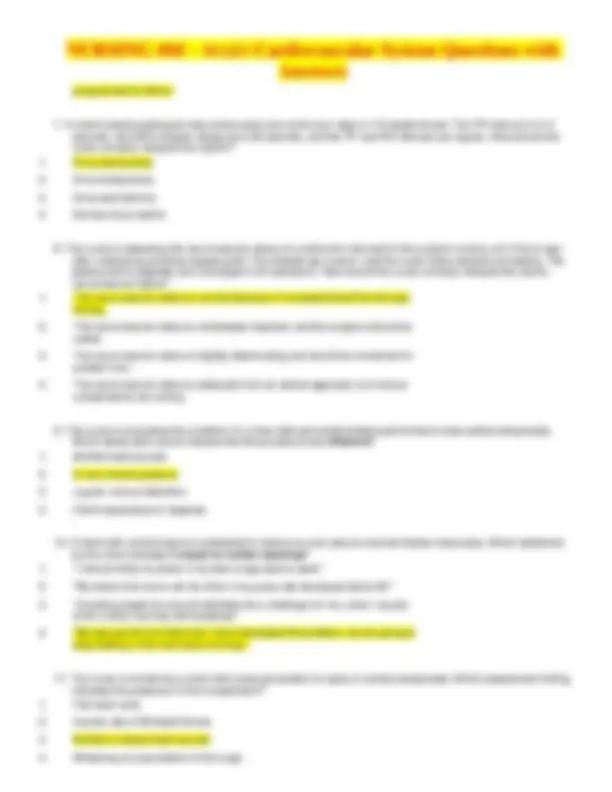
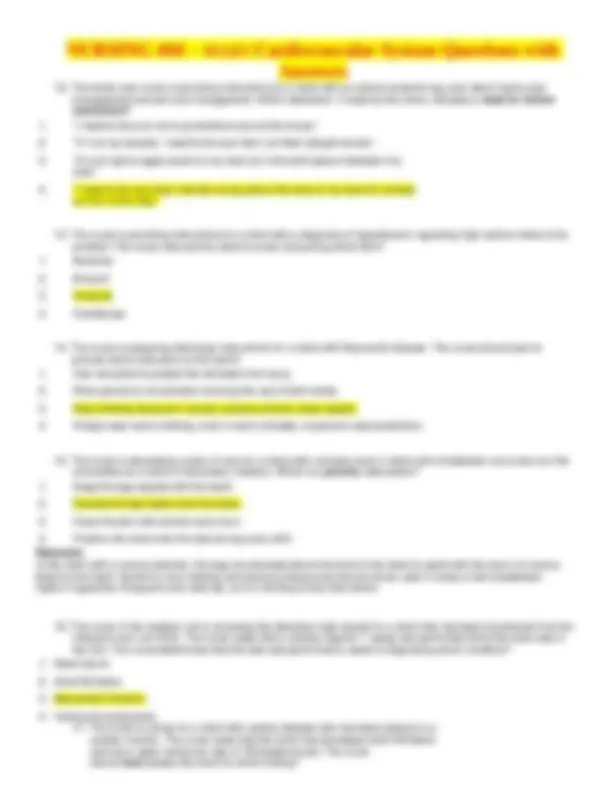

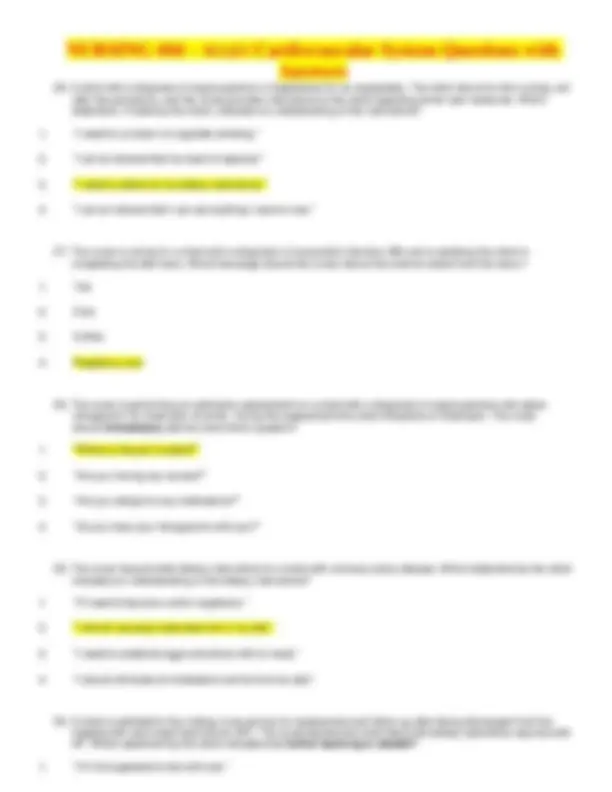
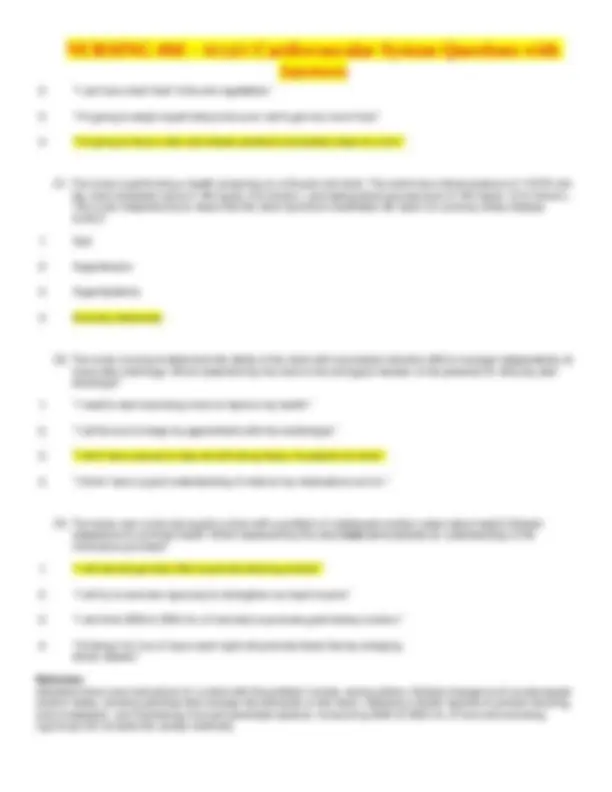
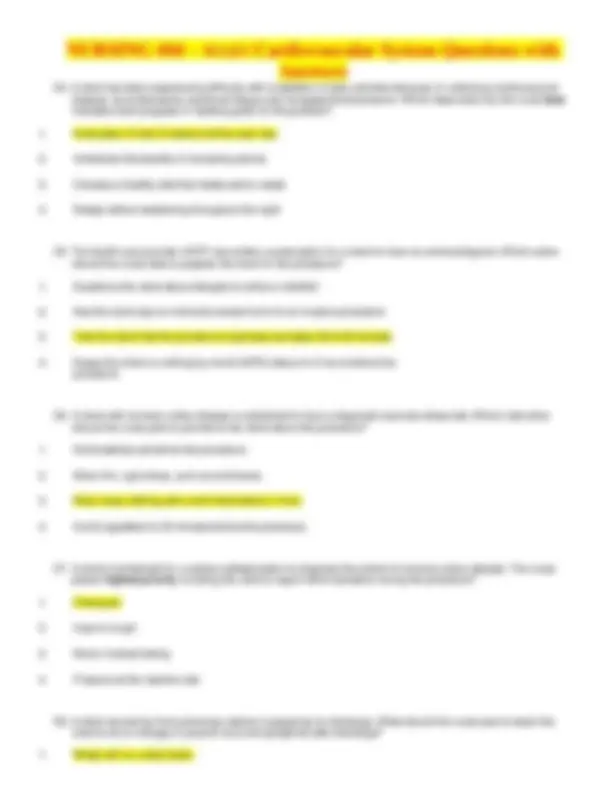
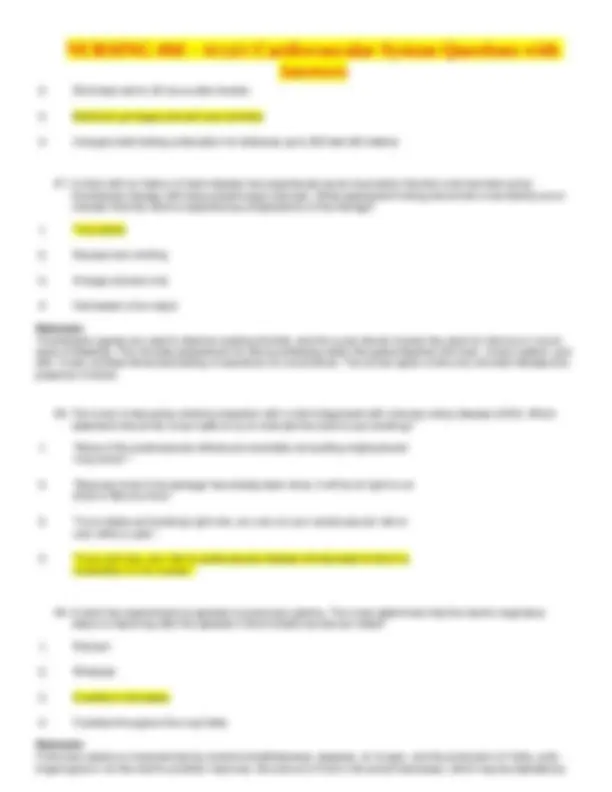
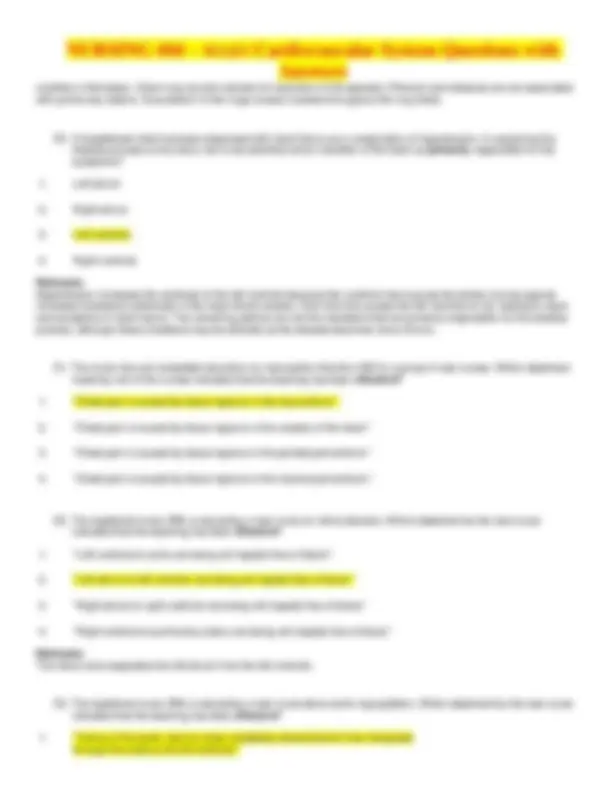

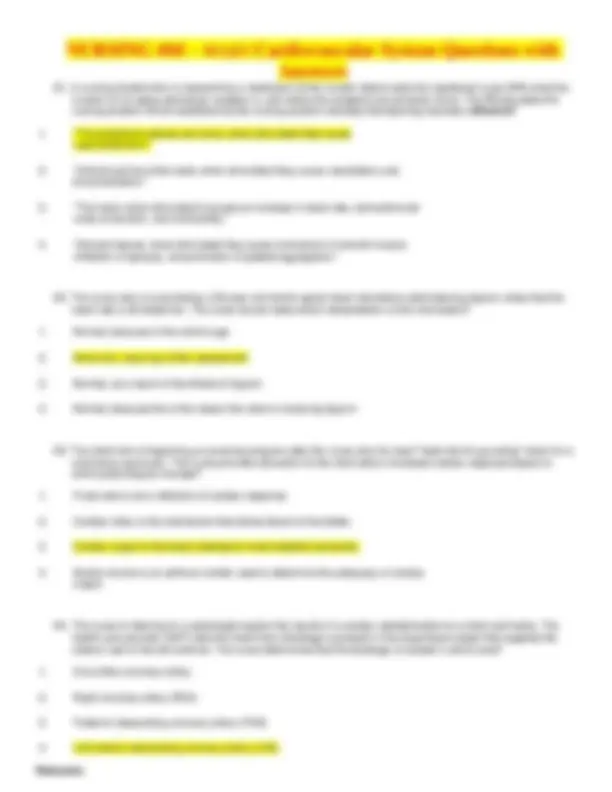

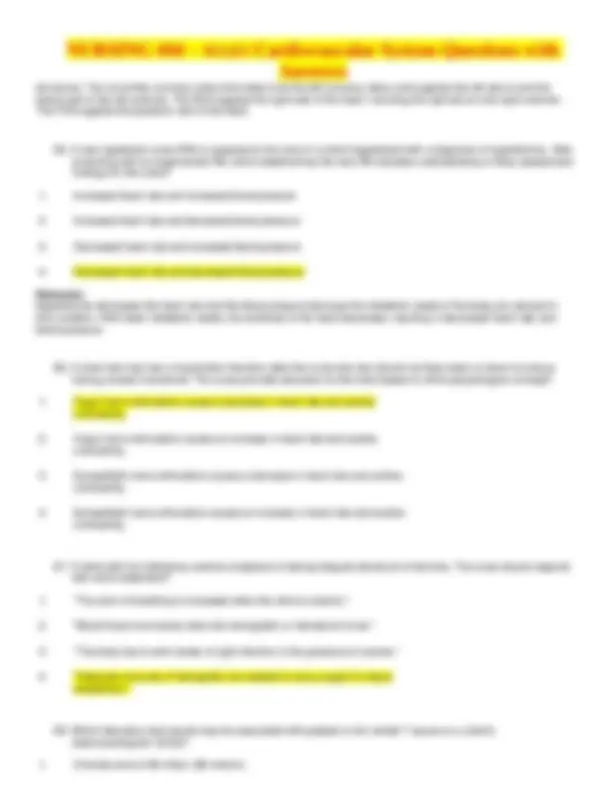
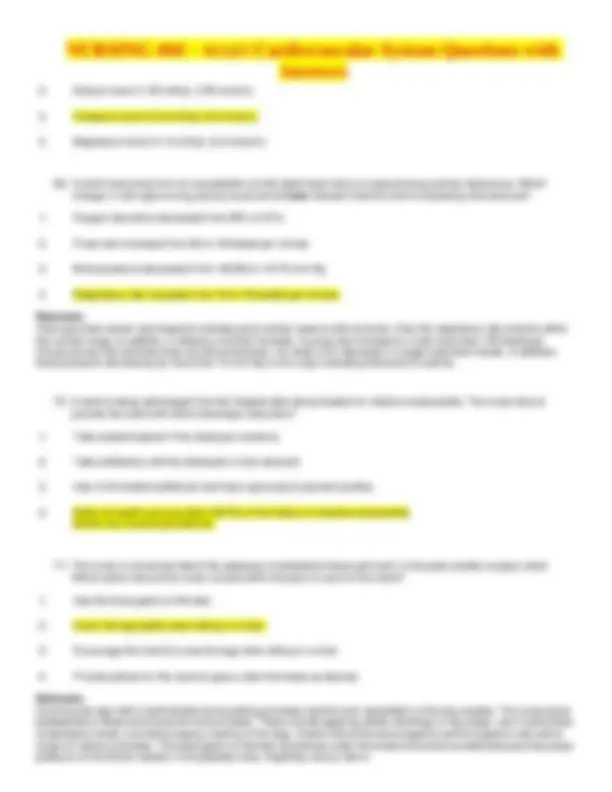
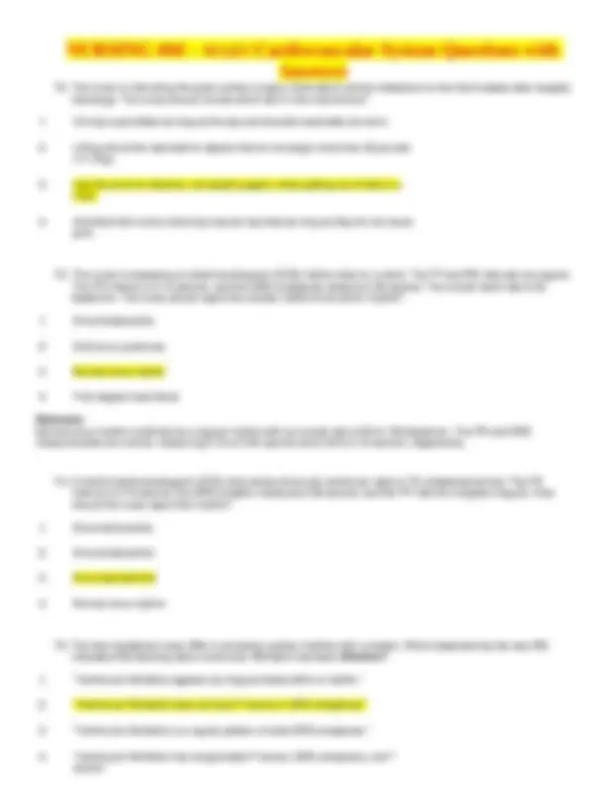
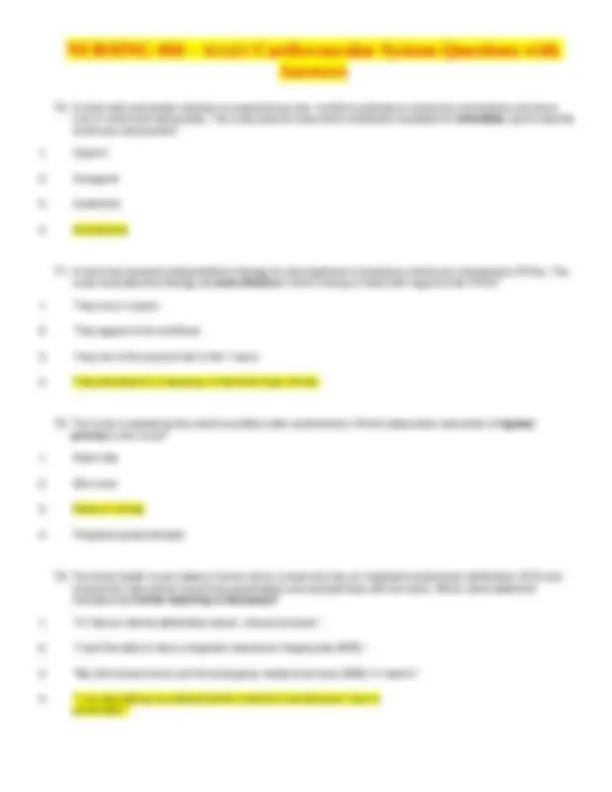
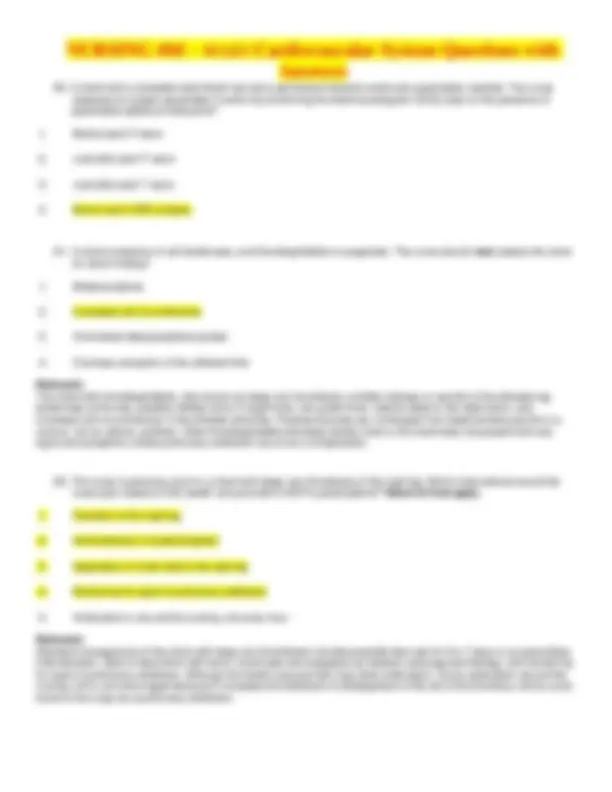
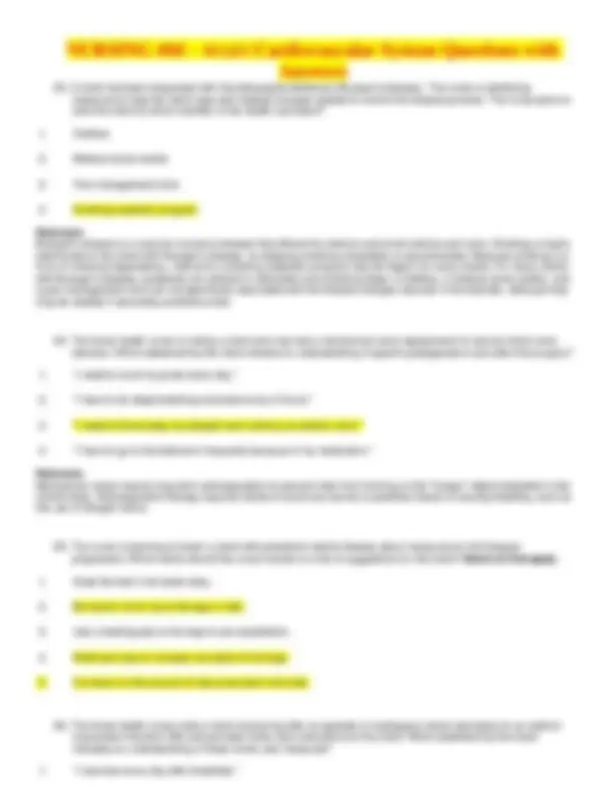

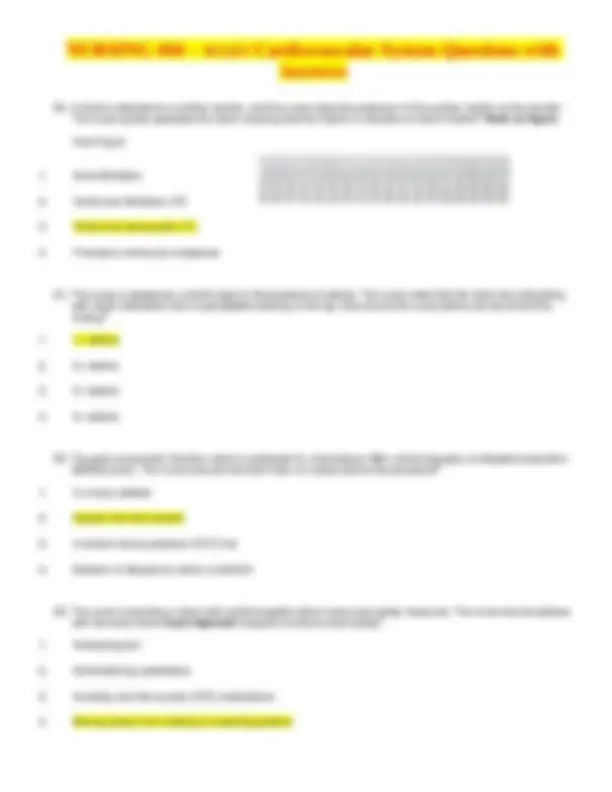
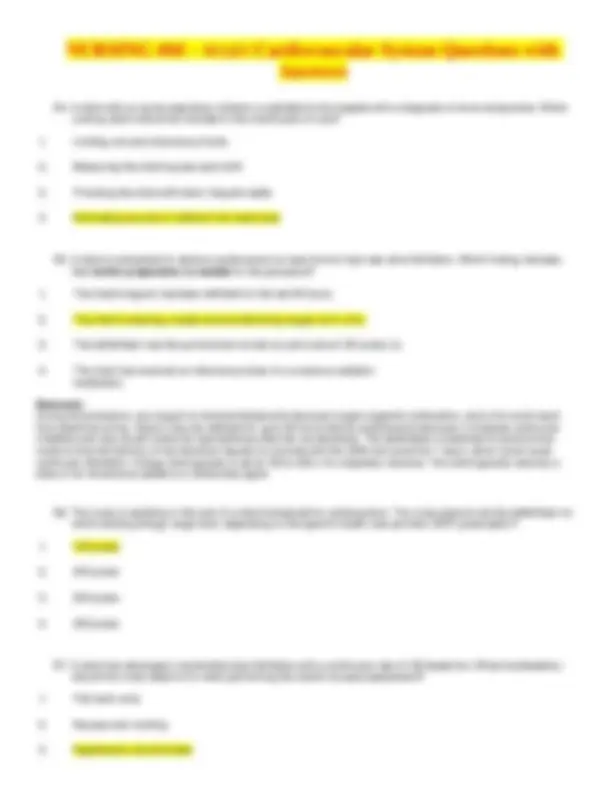

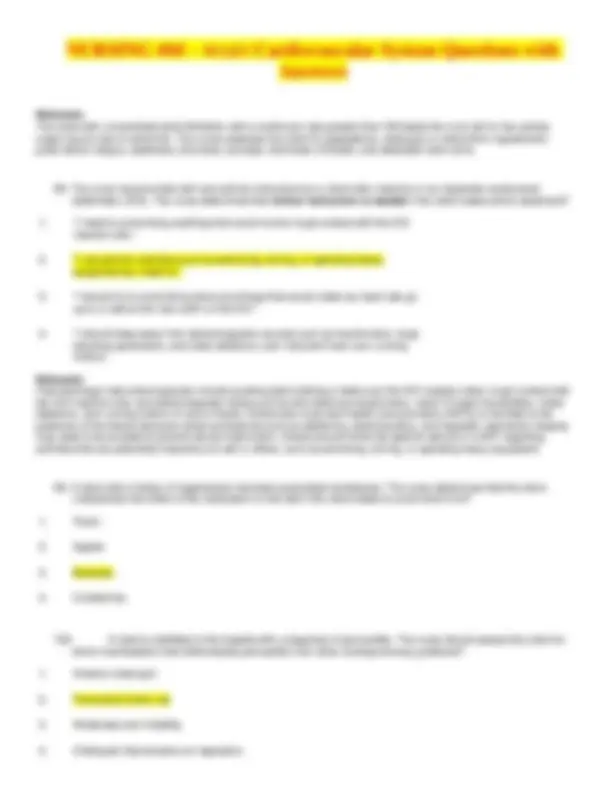
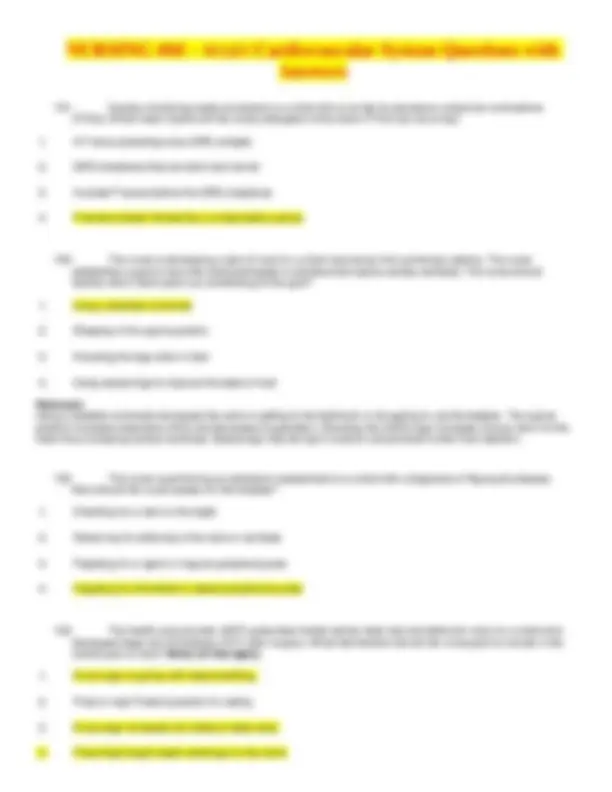

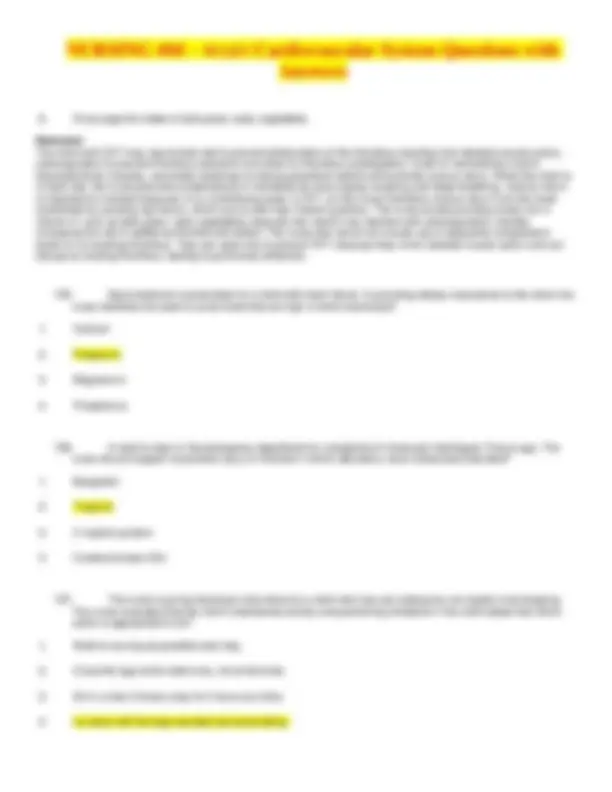
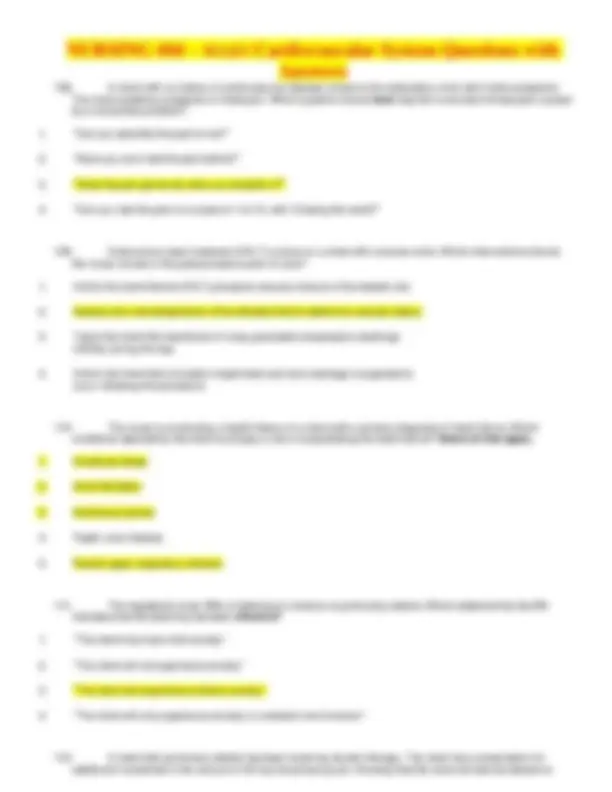

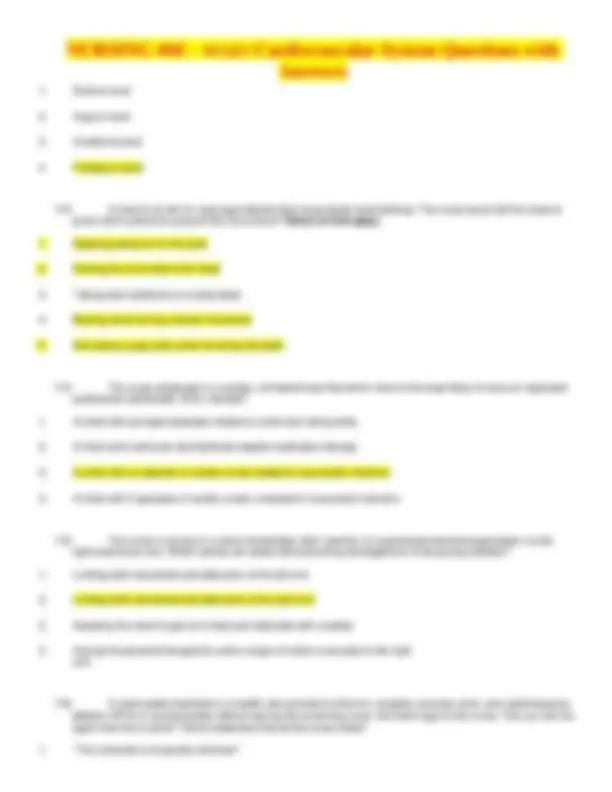

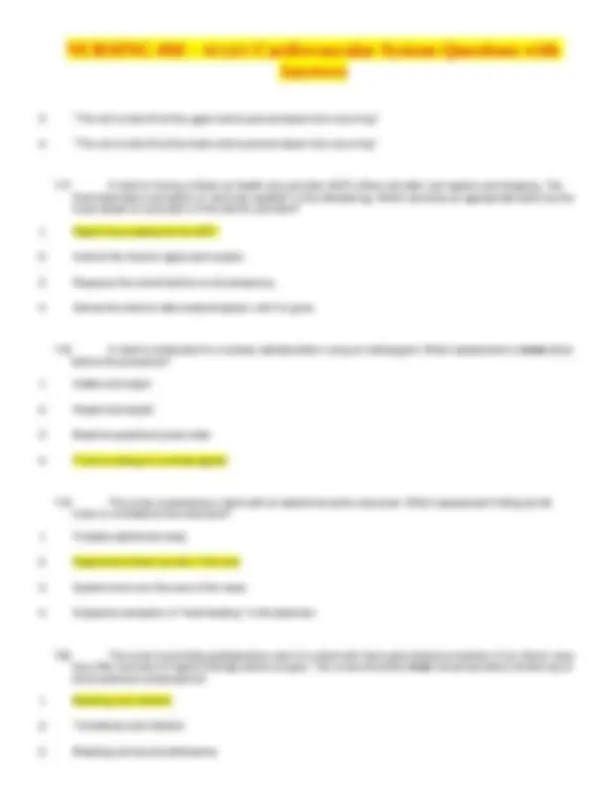

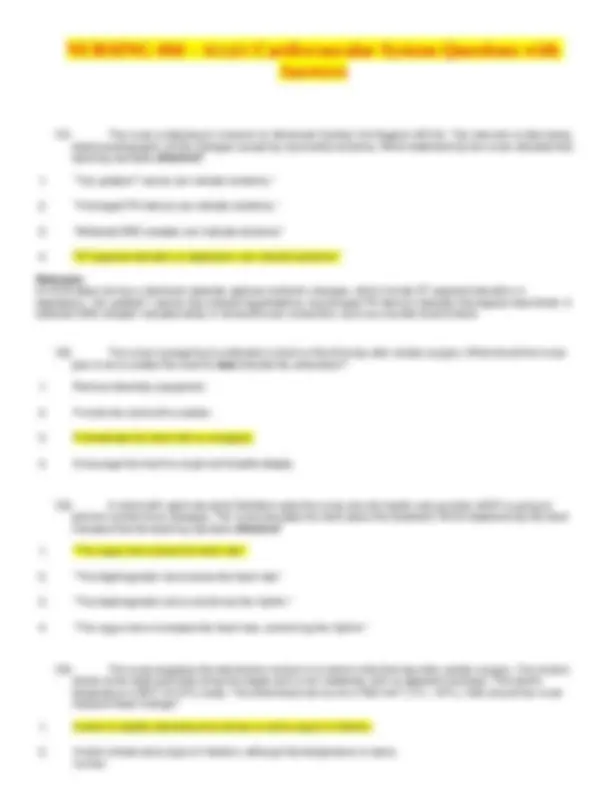
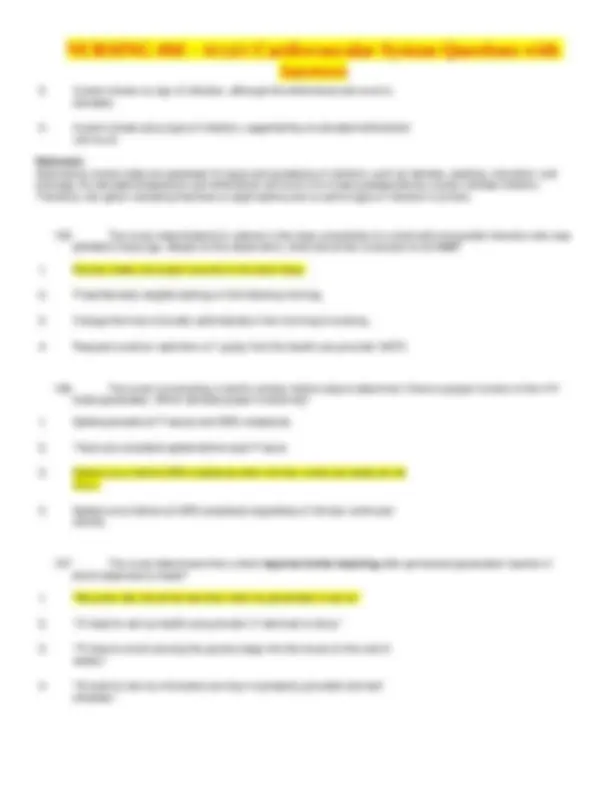
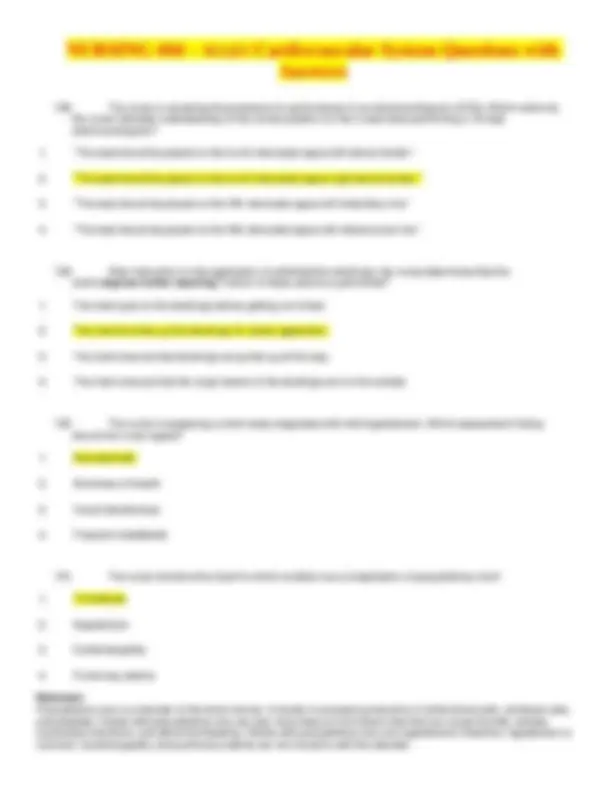
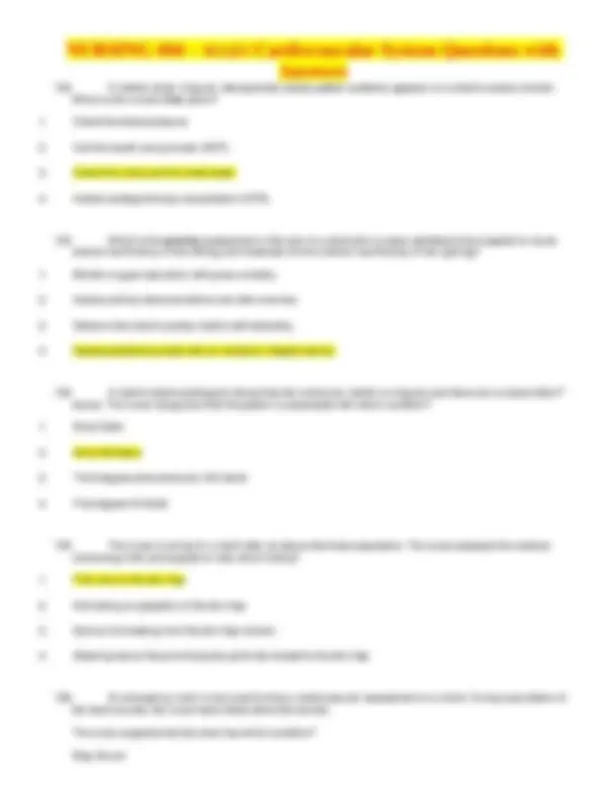
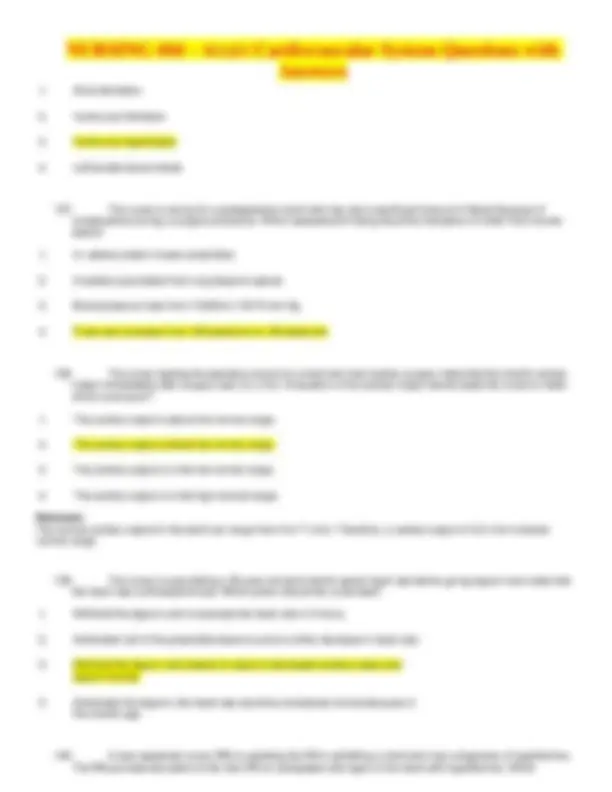

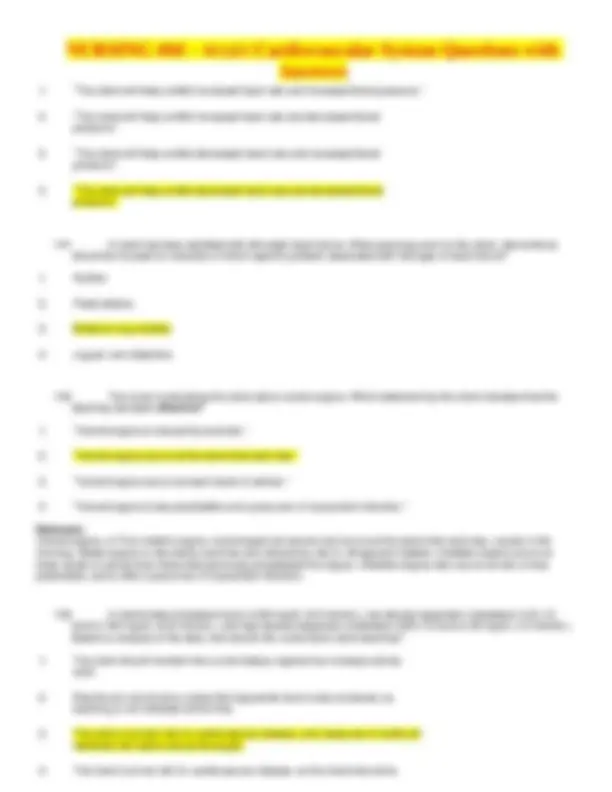
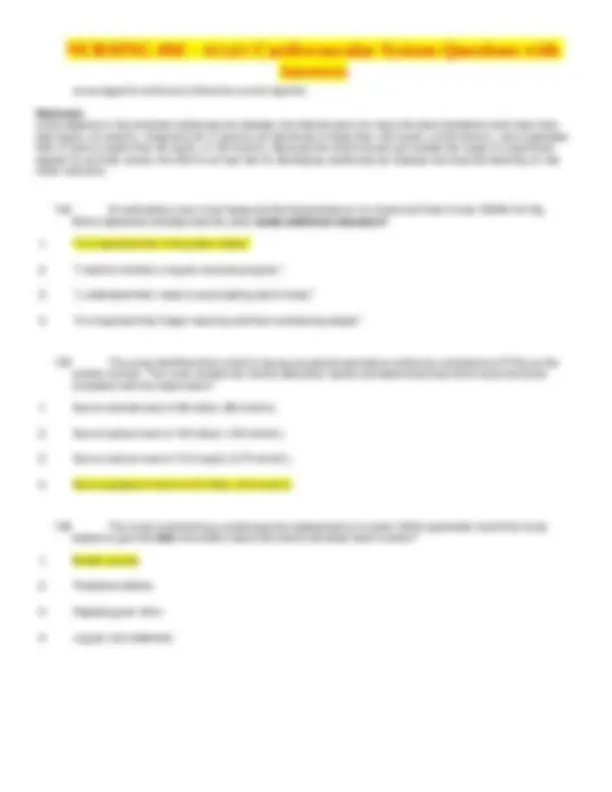


Study with the several resources on Docsity

Earn points by helping other students or get them with a premium plan


Prepare for your exams
Study with the several resources on Docsity

Earn points to download
Earn points by helping other students or get them with a premium plan
Community
Ask the community for help and clear up your study doubts
Discover the best universities in your country according to Docsity users
Free resources
Download our free guides on studying techniques, anxiety management strategies, and thesis advice from Docsity tutors
NURSING 404 - NCLEX Cardiovascular System | Questions with Answers (100% correct).
Typology: Exams
1 / 47

This page cannot be seen from the preview
Don't miss anything!








































crackles in the bases. (Clear lung sounds indicate full resolution of the episode.) Rhonchi and wheezes are not associated with pulmonary edema. Auscultation of the lungs reveals crackles throughout the lung fields.
through the left ventricle to the left atrium."
The LAD bifurcates from the left main coronary artery to supply the anterior wall of the left ventricle and a few other
structures. The circumflex coronary artery bifurcates from the left coronary artery and supplies the left atrium and the lateral wall of the left ventricle. The RCA supplies the right side of the heart, including the right atrium and right ventricle. The PDA supplies the posterior wall of the heart.